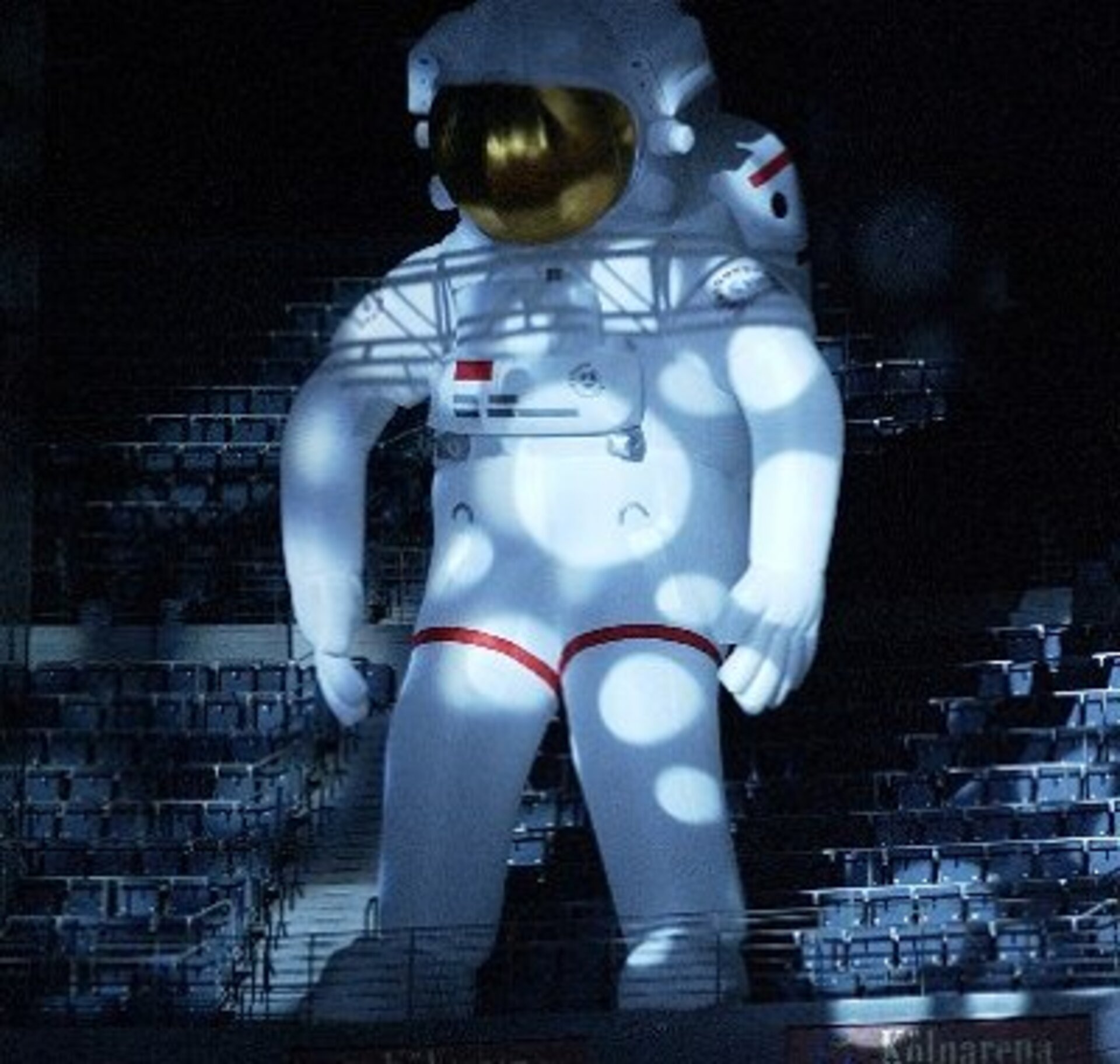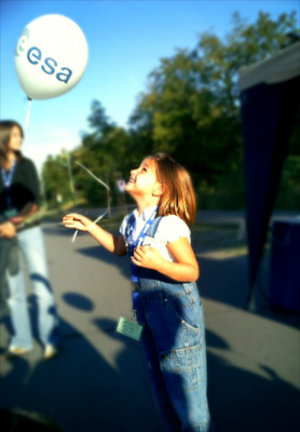'The best view of all is our beautiful planet'
You're speeding through space at 28 000 kilometres per hour, at times the outside temperature gets down to a chilling minus two hundred degrees Celsius, there is no quick getaway. You're an astronaut, living on board the International Space Station (ISS).
On Friday 17 September 2004, five thousand people experienced life as an astronaut during the 'Night of the astronauts' at the KölnArena in Cologne, Germany. For one night only, twelve members of the European Astronaut Corps brought space to Earth.
Amongst the audience were eighteen other European, Russian and American astronauts and cosmonauts, including former members of the European Astronaut Corps and the entire Spacelab 1 crew.
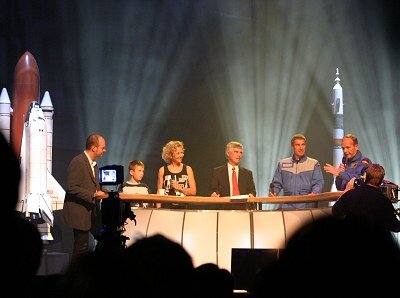
The evening opened with an inspiring laser show interspersed with 3-D imagery. With the help of spectacular images and 3-D footage, the astronauts recounted their experiences outside of Earth's atmosphere.
Journey to space
Space is not an easy place to be, so to begin with you have to train, train, and train some more. "There are so many new experiences and new things to be learnt," recalled Italian astronaut Poalo Nespoli. It is not all plain sailing though; the astronauts were in agreement - learning Russian and waiting for a flight are the hardest things to do.
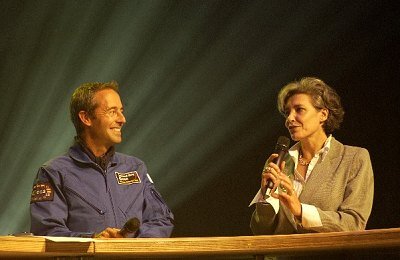
With training completed, and the waiting over, the journey to space can begin. The roar of the engines was overwhelming as the Space Shuttle was launched on the large video screen. Strapped into their cockpit seats the astronauts on board aren't quite sure if their knees are knocking with fear, or whether it's because the Shuttle violently shakes them back and forth.
Using scale models, Michel Tognini, Head of the European Astronaut Corps, himself a former astronaut, gave an introductory lesson on the American Space Shuttle and the Russian Soyuz spacecraft. In the last few years a number of Europe's astronauts have made the journey to the Station on board the smaller Soyuz.
Space to move
After spending two days in the Soyuz, it's refreshing to enter the seemingly roomy Space Station. Moving around is harder than you might expect. "You have to be really careful; it's so easy to move, but then you have to stop. Before you know it you are moving too fast and you smack straight into a wall," explained Pedro Duque from Spain.
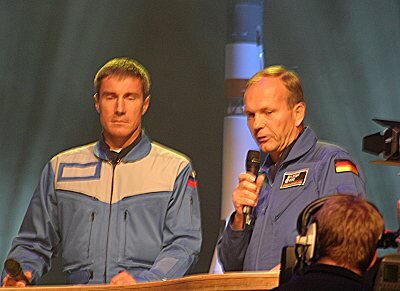
Eating is just as difficult, but can also be entertaining. "Growing up my parents always told me not to play with food. In space it's really hard not to!" joked Dutch astronaut André Kuipers.
Thanks to a series of 3-D photos it was as if the audience was right there on board the ISS. Perhaps not the sterile, orderly environment you might expect, but a real-life working laboratory. Computers, cameras, paperwork, electrical equipment – all the surfaces are covered with objects fixed in place. To the left an astronaut works out on the treadmill, whilst below to the right the Earth passes by the window.
Link-up
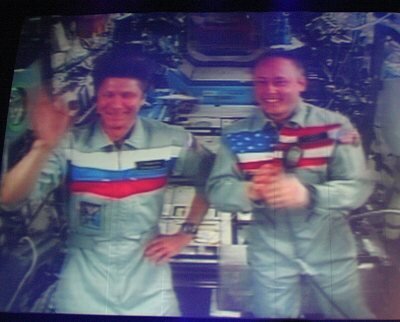
For the astronauts on board the Space Station there are no less than sixteen sunrises and sunsets each day. Gennadi Padalka and Mike Fincke - the Expedition Nine crew, who have been on board the Station since the flight of ESA astronaut André Kuipers in April this year, will enjoy this sight for one more month.
Padalka and Fincke checked in with the Cologne audience via a live satellite link-up. At the request of German astronaut Hans Schlegel, Padalka performed a backwards somersault, for which he received an enthusiastic five thousand strong round of applause.
Beautiful planet
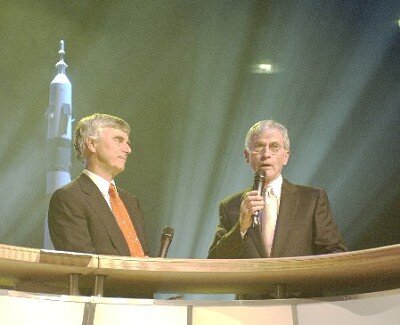
Selected as having the most interesting questions in a competition with German radio station WDR, two members of the public talked directly to the ISS crew. Mr Köhler asked Fincke and Padalka what they dreamt about in space. Both agreed that their dreams were not so different to those on Earth, "Family, friends, things we do here on the Station – good dreams."
To 11-year-old Dario Wende's question "How far can you see in space?", Mike Fincke replied, "You can see further here in space. At night the stars and the Moon are brighter. But the best view of all is Earth. Everyday I look out the window and see our beautiful planet."
There isn't much time to look out the window though; being an astronaut means hard work. Each day there is a tight work schedule and numerous scientific experiments that have to be performed. It is a busy time, with long working hours, but not just for the astronauts. "You aren't alone up there, back down on Earth there is a whole crew working on your mission" explained German astronaut Reinhold Ewald.
Exploration
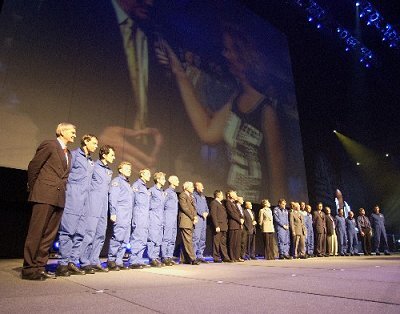
Some of the research on the Space Station helps to prepare for further exploration of our Solar System. Special guest and living legend, John Young, one of only twelve men to have set foot on the Moon, is convinced that there will be a base on the Moon in this century, and perhaps even on Mars.
Ulf Merbold, former ESA astronaut and co-presenter for the evening, will not experience this personally. Someone who does dream of walking in the red dust of Earth's nearest neighbour is Belgian astronaut Frank De Winne: "I would definitely want to be a candidate to go to Mars. It may be too far off for me though. Perhaps one day a youngster who is here in the audience will make it there."


